College football is two things at once. At the top, it is as stolid and inflexible as it has been since the 1970s. Alabama, Clemson, Ohio State and Oklahoma have each finished in the AP top 10 for at least six straight years (Bama is at 13 straight) and have hogged 20 of 28 College Football Playoff bids. Plus, Georgia is at four straight top-10 finishes, and Notre Dame has been to two of the past three CFPs. We have a clear idea of who is in this sport’s on-field ruling class.
Beneath the surface, however, it remains as chaotic as ever.
On average in the FBS, about 2.2 teams per season either improve or regress by at least 20 adjusted points per game in my SP+ ratings — an extreme jump or stumble — while a total of 27.5 per year move by at least 10 points.
Baylor has gone from 7-6 and 67th in SP+, to 11-3 and 18th, to 2-7 and 63rd in the past three years. Central Michigan went from 8-5 to 1-11 to 8-6 from 2017 to 2019. A lot of programs don’t like standing still.
Typically, there’s a rubber band effect. Of the teams that regressed by at least 10 adjusted points per game from 2005 to 2019, 66% improved the next season with an average change of plus-3.7 PPG; of the teams that improved by at least 10 adjusted PPG, 60% regressed the next year with an average change of minus-2.3. Even in a pandemic year, these trends mostly held. With practice and contact limitations, it was a difficult time to attempt a huge rebound, but schools like Nevada, Arkansas, Toledo, NC State, etc., pulled it off to varying degrees.
The 2021 season is approaching quickly, and we can be guaranteed a brand new set of twists and turns. But let’s talk about the teams that made particularly strong moves, up or down, in the scattershot 2020 season. Of those that stumbled, which are the most likely to rebound quickly? Of those that surged, which are most likely to sustain their gains?
Teams most likely to sustain 2020 gains
Though everyone played a varied number of games, the FBS still saw a pretty standard 12 teams jump by at least 10 adjusted PPG in SP+ last fall: Coastal Carolina (+25.0), BYU (+23.1), UTSA (+17.2), UAB (+16.6), Northwestern (+15.6), West Virginia (+14.6), Arkansas (+13.4), Toledo (+12.9), Nevada (+12.0), Georgia Tech (+11.5), Cincinnati (+10.8) and Maryland (+10.0).
Coastal’s surge was a record-setter — from 2005 to 2019, the biggest one-year jumps had come from 2014 Western Michigan (+24.7), 2012 Ole Miss (+23.9) and 2014 FIU (+22.7). Of the 12 teams to have jumped at least 20 points per game, 11 proceeded to regress the next season, but WMU didn’t; PJ Fleck’s Broncos returned a large portion of the roster core responsible for the jump and managed to continue improving in both 2015 and 2016. Heavy returning production, including that of star quarterback Grayson McCall, will give the Chanticleers a chance of maintaining their new pace.
They aren’t the most likely to stay the course, however. When the updated SP+ projections come out soon, they will be projected to slide by about 1.7 adjusted points per game. (That’s still good for about 10 projected wins.) BYU and Northwestern, which are dealing with heavy losses, could both be due setbacks as well. But here are the teams with the best chance of further raising the bar.
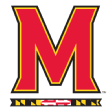
Maryland Terrapins
2019: 3-9 record, 96th in SP+ (-6.3 adjusted PPG)
2020: 2-3, 53rd (+3.7)
2021 projection*: 6-6, 38th (+9.2)
We didn’t get a complete impression of Mike Locksley’s Terrapins last season; they played only five games and managed to both wallop Penn State and lose to Rutgers (and to Northwestern by 40!). But their defense rounded into form — despite the small sample size, they jumped to 44th in defensive SP+, their best finish since 2013 — and young quarterback Taulia Tagovailoa got his feet wet.
The defense now returns 10 starters, including a potential star in cornerback Tarheeb Still. And with Dontay Demus Jr., Rakim Jarrett & Co. out wide, Tagovailoa has one of the Big Ten’s most explosive (if still potentially inconsistent) receiving corps at his disposal. The Terps aren’t a Big Ten East contender, but their odds of finishing above .500 for the first time since 2014 are pretty solid.
* I will be posting updated 2021 SP+ projections soon, and the numbers I’m using here are where those numbers currently stand. They could change slightly based on a last-second transfer or camp injury.
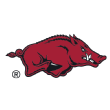
Arkansas Razorbacks
2019: 2-10 record, 108th in SP+ (-10.6 adjusted PPG)
2020: 3-7, 57th (+2.8)
2021 projection: 5-7, 48th (+7.7)
Following a 2-10 collapse in 2019, the Razorbacks were competitive again under Sam Pittman, winning three SEC games and nearly winning three more. They have a big hole to fill at quarterback, with sophomore KJ Jefferson likely taking Feleipe Franks‘ place, but Treylon Burks is one of the SEC’s best slot receivers, and running back Trelon Smith will be taking handoffs behind a big and experienced line. Defensive coordinator Barry Odom still needs an ace pass-rusher but returns 10 starters and added some reinforcements via the transfer portal.
One thing that’s harder to like: the schedule. With road trips to Alabama, Georgia, Ole Miss and LSU, plus a trip to Jerry World to face Texas A&M, the Hogs will have to win nearly every winnable game to reach a bowl.

Georgia Tech Yellow Jackets
2019: 3-9 record, 111th in SP+ (-12.0 adjusted PPG)
2020: 3-7, 75th (-0.5)
2021 projection: 5-7, 62nd (+4.0)
Geoff Collins embraced a lengthy rebuilding project with back-to-back youth movements. His 2020 squad was led by freshmen Jeff Sims (quarterback) and Jahmyr Gibbs (running back), with plenty of freshmen and sophomores playing roles on the offensive line and defense. They weren’t good, but they did show promise: the defense jumped to 58th in defensive SP+, and the offense averaged a solid 31.2 points per game when Gibbs had at least 100 combined rushing and receiving yards (and 16.6 when he didn’t).
Like Arkansas, Tech’s schedule is brutal. The Jackets face Miami and North Carolina in divisional play, draw Clemson from the Atlantic division and take on Notre Dame and Georgia in nonconference. Their ceiling might be 6-6. But when you’ve won six games in two years, that’s something to aspire to.
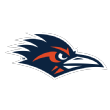
UTSA Roadrunners
2019: 4-8 record, 124th in SP+ (-23.7 adjusted PPG)
2020: 7-5, 93rd (-6.5)
2021 projection: 8-4, 91st (-2.2)
Jeff Traylor’s first Roadrunners squad was a bit on the fortunate side — based on the stats each of their games produced, SP+ saw them more as a five- or six-win team. But they played great special teams and produced a lot more turnover opportunities than their opponents, and those things aren’t impossible to sustain.
They rank 13th in overall returning production, too: Most of last year’s difference-makers, from potential All-American running back Sincere McCormick to quarterback Frank Harris to two of the better lines in Conference USA are back. They return 12 super seniors in all, and whether they got breaks last year or not, they are projected favorites, by at least a small margin, in nine games. UAB is the favorite in the C-USA West, but UTSA heads into 2021 a solid No. 2.

NC State Wolfpack
2019: 4-8 record, 94th in SP+ (-6.3 adjusted PPG)
2020: 8-4, 54th (+3.6)
2021 projection: 7-5, 46th (+7.8)
Devin Leary faces a sneaky amount of pressure this season. He quarterbacked only four games due to a broken fibula, but in those games the Pack went 3-1, and Leary produced a Total QBR that would have ranked 13th in FBS over a full season.
The Wolfpack also won five games without Leary to finish 8-4. Granted, they lost by an average of 17 points against the three SP+ top-40 teams they faced — a defense that was good against bad opponents was really bad against good ones — and finished outside of the top 50 as a result. But they return almost every starter, and since Leary’s production only somewhat factors into the projections, State has a solid chance of improving even further beyond what SP+ expects. If Leary can live up to small-sample expectations, anyway.
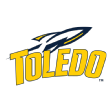
Toledo Rockets
2019: 6-6 record, 114th in SP+ (-13.7 adjusted PPG)
2020: 4-2, 76th (-0.8)
2021 projection: 8-4, 66th (+2.7)
The outlook for Jason Candle’s Rockets diminished a tad when starting quarterback Eli Peters retired in the offseason following a series of injuries. The replacements are capable — among them: Georgia Tech transfer Tucker Gleason and sophomore Carter Bradley, who showed big-play potential last fall — but that dropped the Rockets from first to 20th in returning production from the 50s to the 60s in the SP+ projections.
This is still a team built for a further surge. Things briefly fell apart in 2019, but Candle made a couple of huge defensive hires in former Mount Union head coach Vince Kehres and TFLs master Craig Kuligowski, and they immediately paid off. Now it appears every defensive starter returns, along with all-conference center Bryce Harris, big-play receiver Isaiah Winstead and nearly every offensive contributor not named Peters.
Teams most likely to rebound from a 2020 stumble
We like parallels: Just as 12 teams rose by at least 10 adjusted PPG, 12 others fell by the same amount, led by the 2019 national champions: LSU (-27.5), Navy (-18.6), Baylor (-16.5), FAU (-14.7), Louisiana Tech (-14.1), Temple (-13.3), Memphis (-13.2), Air Force (-13.1), Utah State (-12.0), Michigan (-12.0), UL Monroe (-11.4), Minnesota (-10.8).
(If you want, you can throw in Old Dominion as well — the Monarchs regressed by 10.3 adjusted PPG in 2019, then had to opt out of the 2020 season.)
On average, about eight of these teams are likely to bounce back this fall. SP+ projects 10 to do so, seven by at least three adjusted PPG.

Michigan Wolverines
2019: 9-4 record, 10th in SP+ (+20.7 adjusted PPG)
2020: 2-4, 33rd (+8.8)
2021 projection: 8-4, 17th (+18.3)
For years, it was easy to make the case that Jim Harbaugh’s Michigan tenure was being painted with an unfair brush. His Wolverines had won 10 games in three of his five years (they had done so only once in eight years before his arrival) and had finished 10th or better in SP+ four times after averaging a 31.1 ranking in the decade prior. His biggest crime was simply being unable to keep up with an Ohio State program achieving maybe its highest ever cruising altitude.
It’s a lot harder to make a defense after 2020. The Wolverines significantly underachieved last fall, going 2-4 and not only struggling to keep up offensively (not a new thing) but also regressing significantly on D.
SP+ projections take longer-term factors into account — your recent history beyond last season, your recent recruiting — and those factors suggest the Wolverines have good odds of improving over last year’s performance. You can be forgiven if your eyes disagree. The Wolverines have one genuine star (defensive end Aidan Hutchinson). Their starting quarterback will likely either be a frequently injured Texas Tech transfer (Alan Bowman) or a redshirt freshman (Cade McNamara) with a single strong performance, against Rutgers, on his résumé.
Still, SP+ is here to remind you of the good times. (Who says stats and stats people are antisocial?) There are plenty of ways for Harbaugh’s changes — namely, bringing in Mike Macdonald as defensive coordinator — to go awry, but they certainly aren’t guaranteed to.
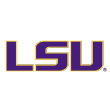
LSU Tigers
2019: 15-0 record, second in SP+ (+33.1 adjusted PPG)
2020: 5-5, 45th (+5.6)
2021 projection: 7-5, 26th (+9.0)
A national title earns you a giant mulligan. A year after romping through the SEC and CFP, Ed Orgeron’s Tigers lost to Mississippi State and Missouri, then fell to the worst Auburn team in years by 37 points; they needed a series of fortuitous bounces against Florida and Ole Miss just to finish .500, the least successful performance for a defending champ since Notre Dame went 4-4-1 in 1950. Orgeron found that the replacements for his lost stars weren’t quite ready for prime time yet — losing a couple more than expected to opt-outs didn’t help — while the replacement hires he had made for departed coaches like Joe Brady and Dave Aranda simply weren’t up to snuff.
It’s hard to figure out what the Tigers might be capable of in 2021, especially with a recent injury to quarterback Myles Brennan. But the odds of a rebound of some level are extremely high. The Tigers return 17 to 18 starters and add an intriguing transfer in Clemson nickel linebacker Mike Jones Jr. Plus, Orgeron’s mulligan hires of offensive coordinator Jake Peetz and defensive coordinator Daronte Jones could reestablish some of the young energy that was lacking last fall. Whether you see the Tigers as a potential Top 25 or top-10 team, they will almost certainly improve.

FAU Owls
2019: 11-3 record, 40th in SP+ (+7.5 adjusted PPG)
2020: 5-4, 95th (-7.1)
2021 projection: 8-4, 75th (+1.1)
After two 11-win seasons and two C-USA titles in three years, FAU was almost guaranteed to regress in Willie Taggart’s first season succeeding Lane Kiffin in 2020. A young defense performed well, ranking 56th in defensive SP+ and allowing just 9.4 points per game in wins, but the offense cratered. The depth chart was a revolving door, and the Owls were held to 10 or fewer points four times.
The Owls return virtually every offensive starter, for better or worse, plus an all-conference receiver in John Mitchell, who missed 2020 with a knee injury. Taggart also brought reinforcements in via the transfer portal. If the offense is simply competent, a defense that returns 10 starters should take it from there.

Minnesota Golden Gophers
2019: 11-2 record, 13th in SP+ (+19.4 adjusted PPG)
2020: 3-4, 34th (+8.6)
2021 projection: 8-4, 25th (+15.5)
Minnesota’s offense continued at a pretty high level in 2020 and should again this fall with quarterback Tanner Morgan returning for what feels like his 17th year as a Gopher. Throw in 1,000-yard running back Mohamed Ibrahim, explosive receivers Chris Autman-Bell and Daniel Jackson and a replenished and experienced offensive line, and the Gophers will score plenty.
They fell from 26th to 64th in defensive SP+, however, primarily due to a dreadful run defense. Tackle transfers Nyles Pinckney (Clemson) and Val Martin (NC State) could provide a boost up front, and the defense is loaded with seniors. Whether that makes UM slightly better or turns them into a dark-horse division contender, we’ll see.
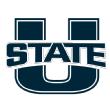
Utah State Aggies
2019: 7-6 record, 83rd in SP+ (-4.3 adjusted PPG)
2020: 1-5, 118th (-16.3)
2021 projection: 5-7, 114th (-10.8)
USU just fielded its worst team since 2007, which certainly provides some “it can’t get worse” energy. While SP+ doesn’t project an enormous recovery, new coach Blake Anderson comes from Arkansas State and brings quarterback Logan Bonner, receiver Brandon Bowling and linebacker Justin Rice with him, among other transfers. The Aggies could get a pretty good jolt of energy. Lord knows they need it.
This is a tenuous time in Logan. USU struggled for almost all of the 1980s, 1990s and 2000s, but Gary Andersen engineered a ferocious surge starting in 2011. Matt Wells maintained it, but everything bottomed out in 2020. Are they about to find themselves lost in the wilderness again, or does Blake Anderson plug the holes quickly?
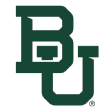
Baylor Bears
2019: 11-3 record, 18th in SP+ (+17.8 adjusted PPG)
2020: 2-7, 63rd (+1.3)
2021 projection: 6-6, 49th (+7.0)
Over the past five seasons, Baylor has either risen or fallen by at least three wins every year and by 19 spots in SP+ in four of five. For more than almost any FBS program, it stands to reason that if they plummeted last year, they’ll rise again this year.
The defense was solid and should remain so, so the lion’s share of improvement will have to come from an offense that ranked just 91st in offensive SP+. Coordinator Jeff Grimes came over from BYU, and Dave Aranda brought in a couple of transfers to boost the line. If the Bears get sturdy quarterback play from either Jacob Zeno or Gerry Bohanon, they could indeed be well-positioned for a rise.

UL Monroe Warhawks
2019: 5-7 record, 109th in SP+ (-10.7 adjusted PPG)
2020: 0-10, 122nd (-22.1)
2021 projection: 3-9, 123rd (-17.0)
You have to feel for Matt Viator. He nearly brought ULM its second ever bowl bid twice: In 2018, the Warhawks went 6-6 but couldn’t score a bid, and in 2019, they lost two one-point games and finished 5-7. And then the bottom fell out: ULM not only went winless but stayed within 17 points of only one opponent.
New coach Terry Bowden inherits an experienced roster with almost no expectations. Offensive coordinator Rich Rodriguez might not have the mobile quarterback he tends to prefer, and the offensive line lost its most reliable pieces, but slot man Perry Carter Jr. is a keeper, and … again … the bar is low. The projected three wins would be a major cause for hope.
